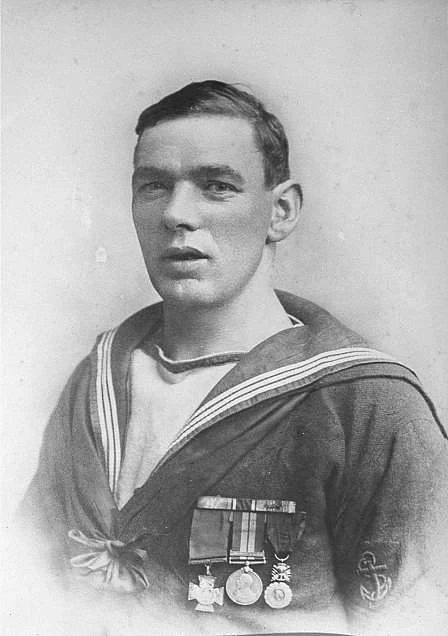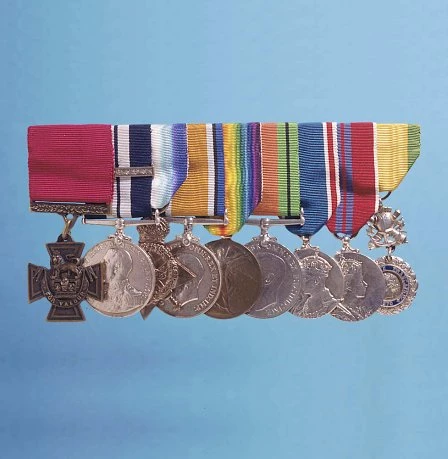A 'mystery' Victoria Cross and a stuffed parrot
William Williams VC. Image © Kenneth Williams Collection.
William Williams' medals. Left to right: Victoria Cross, Distinguished Service Medal with second award bar, Great War service medals (1914-15 Star, War Medal, Victory Medal), Defence Medal 1939-45, Coronation Medals (1937 and 1953), France, Médaille Militaire.
In 1917 William Williams was awarded the Victoria Cross for his role in the sinking of a German submarine.
On 21 July 1917 an Anglesey seaman, William Williams, received the Victoria Cross, Britain's foremost gallantry award. The citation on the award read 'selected by the ship's company of one of H.M. ships to receive the Victoria Cross under Rule 13 of the Royal Warrant'.
This vague citation led this and other similar cases to become known as the 'Mystery VCs'. What lay behind it?
U-boats and Q-ships
During World War I (1914-18), the German Navy attempted to blockade Great Britain, using its submarine (U-boat) fleet to cut off food and vital supplies. One tactic used by Britain to trick the German submarines was to use armed ships disguised as merchant ships. These were known as 'Q-ships'. These ships went to great lengths to ensure that they were attacked, in the hope that the submarine would then surface and expose itself to the hidden guns of the Q-ships.
Williams served on several Q-ships and already held the Distinguished Service Medal for his part in the sinking of a German submarine in February 1917.
H.M.S. Pargust
Williams was awarded the Victoria Cross for his involvement in the sinking of the German submarine UC-29 on 7th June 1917. The H.M.S Pargust was torpedoed and the crew were seen to abandon their disguised Q-ship - complete with a stuffed parrot in a cage - but unknown to the Germans, a small number of men remained hidden on board.
For over 30 minutes, Seaman Williams held in place the starboard gun port, its releasing weights having been freed by the torpedo's explosion. His actions prevented premature exposure of the gun until the moment came to open fire when the German submarine eventually surfaced nearby.
The achievement of sinking UC-29 was recognized by the award of the Victoria Cross to H.M.S. Pargust, the first time a ship had been honoured under the Rule for rewarding an act of collective gallantry.
One officer (Lieutenant R.N. Stuart) and one rating were elected by the crew to receive the award. Williams, whose quick thinking and strenuous effort had saved the day, was the rating.
His distinguished career held one more twist: on 8 August 1917, H.M.S. Dunraven (Pargust's successor and another Cardiff ship) was sunk off the French coast after a five-hour battle with another submarine. Williams received a bar (second award) to his DSM for his gunnery work on this occasion: his third gallantry award in under six months!
William Williams was discharged from the Royal Naval Reserve in November 1918. He settled in Holyhead and was a founder member of the local branch of the British Legion. He died on 23 October 1965.
Background Reading
My mystery ships by G. Campbell. Published by Hodder & Stoughton (1928).
Sea killers in disguise by T. Bridgeland. Published by Leo Cooper (1999).


Comments - (5)
Hi Noel,
All awards of the DSM to British personnel were published in the London Gazette. I suggest you start there. Here's a link to it: https://www.thegazette.co.uk/
Best wishes,
Alastair
Uwch Guradur: Niwmismateg ac Economi Cymru / Senior Curator: Numismatics and the Welsh Economy